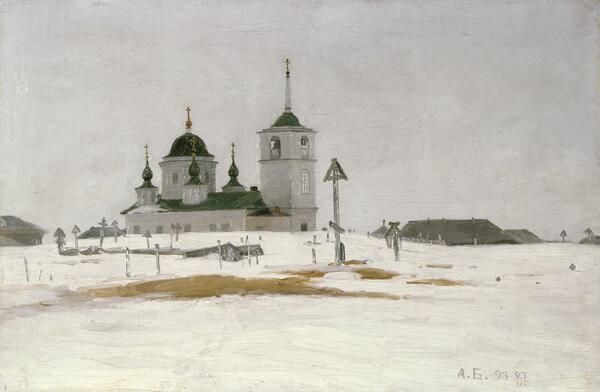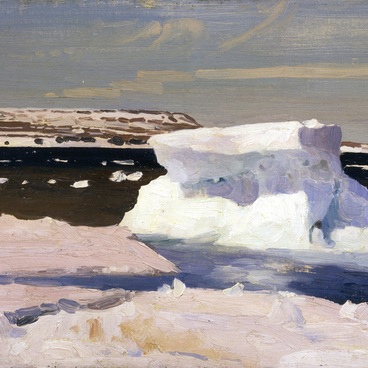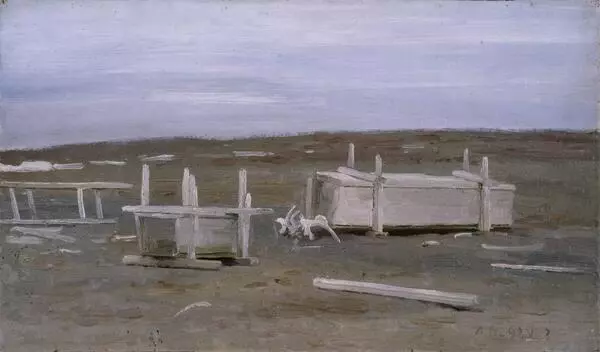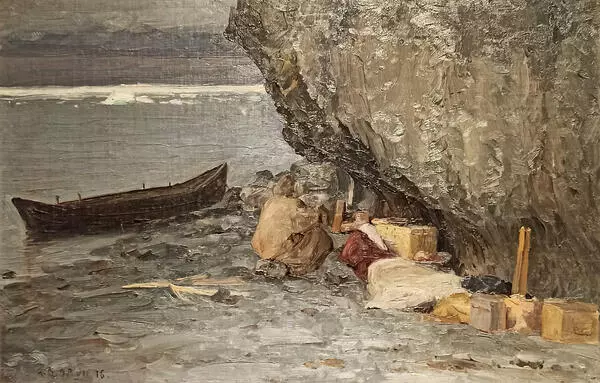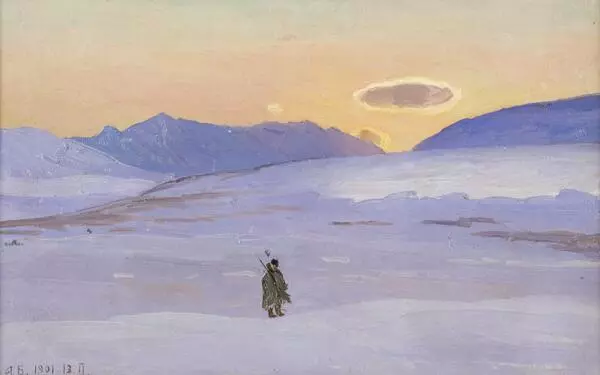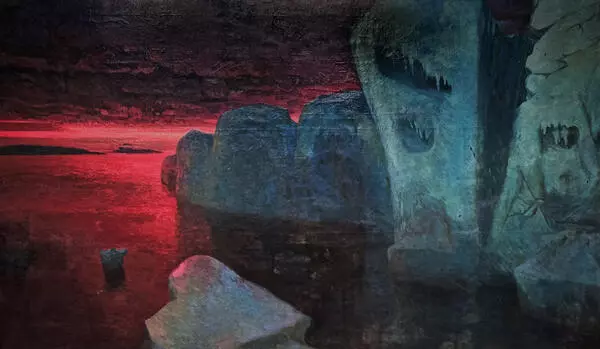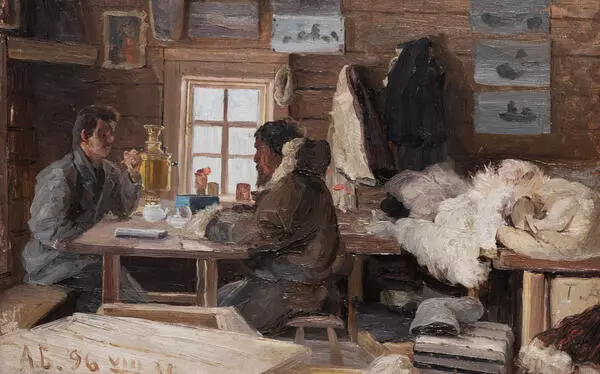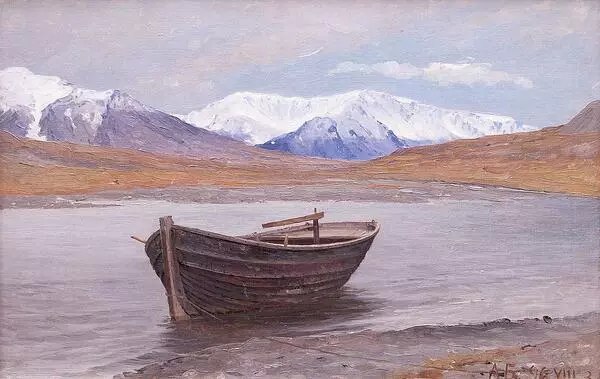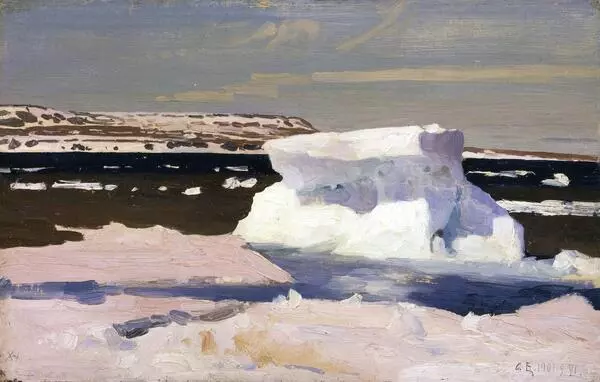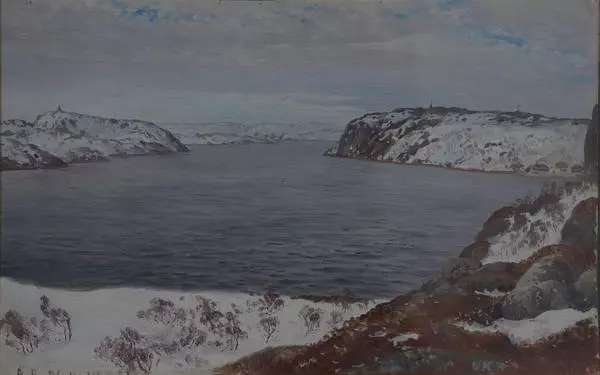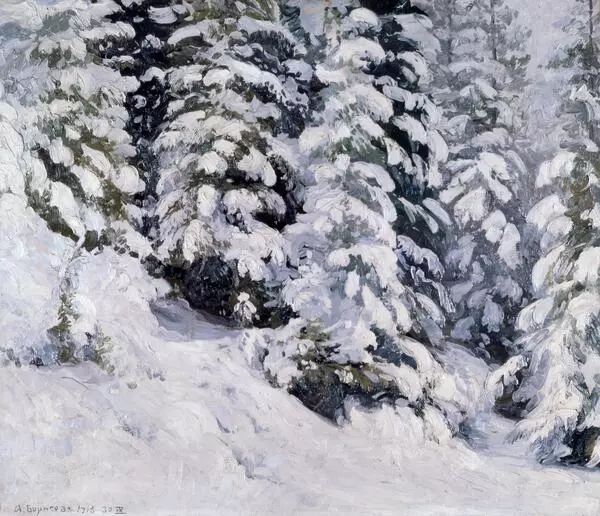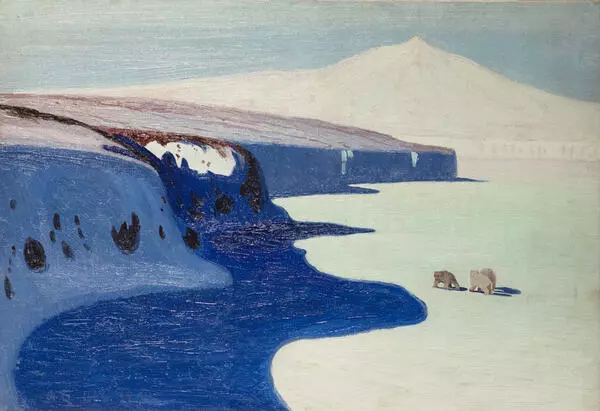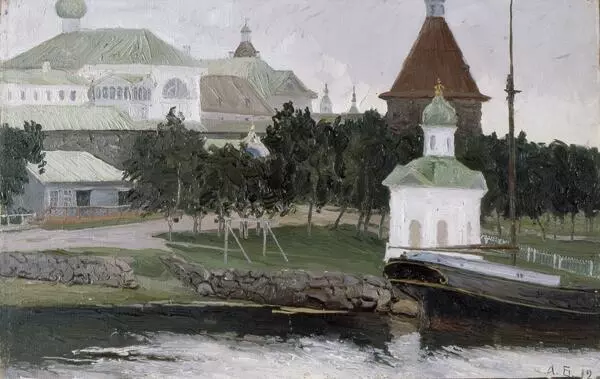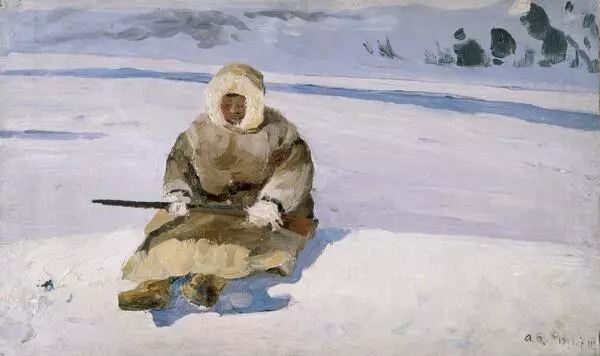Alexander Borisov dedicated a series of paintings to the town of Pustozersk. Pustozersk, a place where the leader of Old Believers Avvakum was executed, doesn’t exist anymore. It’s just a monument installed in 1964 that reminds of the town that once was here. The series of studies by Alexander Borisov is one of the few painted representations of the defunct town, which makes them especially interesting.
Pustozersk. A Church and a Graveyard shows the Transfiguration Church, the last evidence of the town’s activity. In the distance, the roofs of a few houses can be discerned. This is what the artist wrote about the town: “Pustozersk is a depressing sight. I see fading glimpses of the sedentary lifestyle, which, even if harsh and poor, is familiar to our culture. There is a rather big church, but it is a new one. There used to be a lot of them: some churches have rotted, one has burned down. Now there is nothing to remind of the times when many famous exiles languished in Pustozersk. Here is where the famous protopope Avvakum ended his days, executed at the stake. The old men of the town point to a cross that was installed at the site of his execution by Avvakum followers that had come from Mezen for this purpose. They say that the cross attracted many Old Believers, and so a bishop ordered to move the cross to the church so as to avoid temptation. There are nine or ten houses in Pustozersk at the moment, and only four of them are decent and recently built, all the others are in a state of extreme decay. Pustozersk is situated in the middle of the tundra, there is not even a single bush or a hill, only restless hiss of the wind and cold snow falling.”
Every year the Pustozersk residents went to the Yugorsky Strait for Nenets products. The traders went in the beginning of May without luggage. However, their workhands set off in March with loaded sleds, moving slowly towards the Yugorsky Strait. They were supposed to transport food to barter for animal skins. It was with such sled train that the artist travelled across the tundra.
Before Borisov left Pustozersk, the Nenets volost chief issued him a somewhat funny travel document that read: “The bearer of this is a paintist, i.e. a master, and as such should be respected and assisted in any way possible by all my subordinate Samoyeds. In case of disobedience, you will be brought to justice.” Reading this stern decree, the artist couldn’t help but smile.
Pustozersk. A Church and a Graveyard shows the Transfiguration Church, the last evidence of the town’s activity. In the distance, the roofs of a few houses can be discerned. This is what the artist wrote about the town: “Pustozersk is a depressing sight. I see fading glimpses of the sedentary lifestyle, which, even if harsh and poor, is familiar to our culture. There is a rather big church, but it is a new one. There used to be a lot of them: some churches have rotted, one has burned down. Now there is nothing to remind of the times when many famous exiles languished in Pustozersk. Here is where the famous protopope Avvakum ended his days, executed at the stake. The old men of the town point to a cross that was installed at the site of his execution by Avvakum followers that had come from Mezen for this purpose. They say that the cross attracted many Old Believers, and so a bishop ordered to move the cross to the church so as to avoid temptation. There are nine or ten houses in Pustozersk at the moment, and only four of them are decent and recently built, all the others are in a state of extreme decay. Pustozersk is situated in the middle of the tundra, there is not even a single bush or a hill, only restless hiss of the wind and cold snow falling.”
Every year the Pustozersk residents went to the Yugorsky Strait for Nenets products. The traders went in the beginning of May without luggage. However, their workhands set off in March with loaded sleds, moving slowly towards the Yugorsky Strait. They were supposed to transport food to barter for animal skins. It was with such sled train that the artist travelled across the tundra.
Before Borisov left Pustozersk, the Nenets volost chief issued him a somewhat funny travel document that read: “The bearer of this is a paintist, i.e. a master, and as such should be respected and assisted in any way possible by all my subordinate Samoyeds. In case of disobedience, you will be brought to justice.” Reading this stern decree, the artist couldn’t help but smile.

